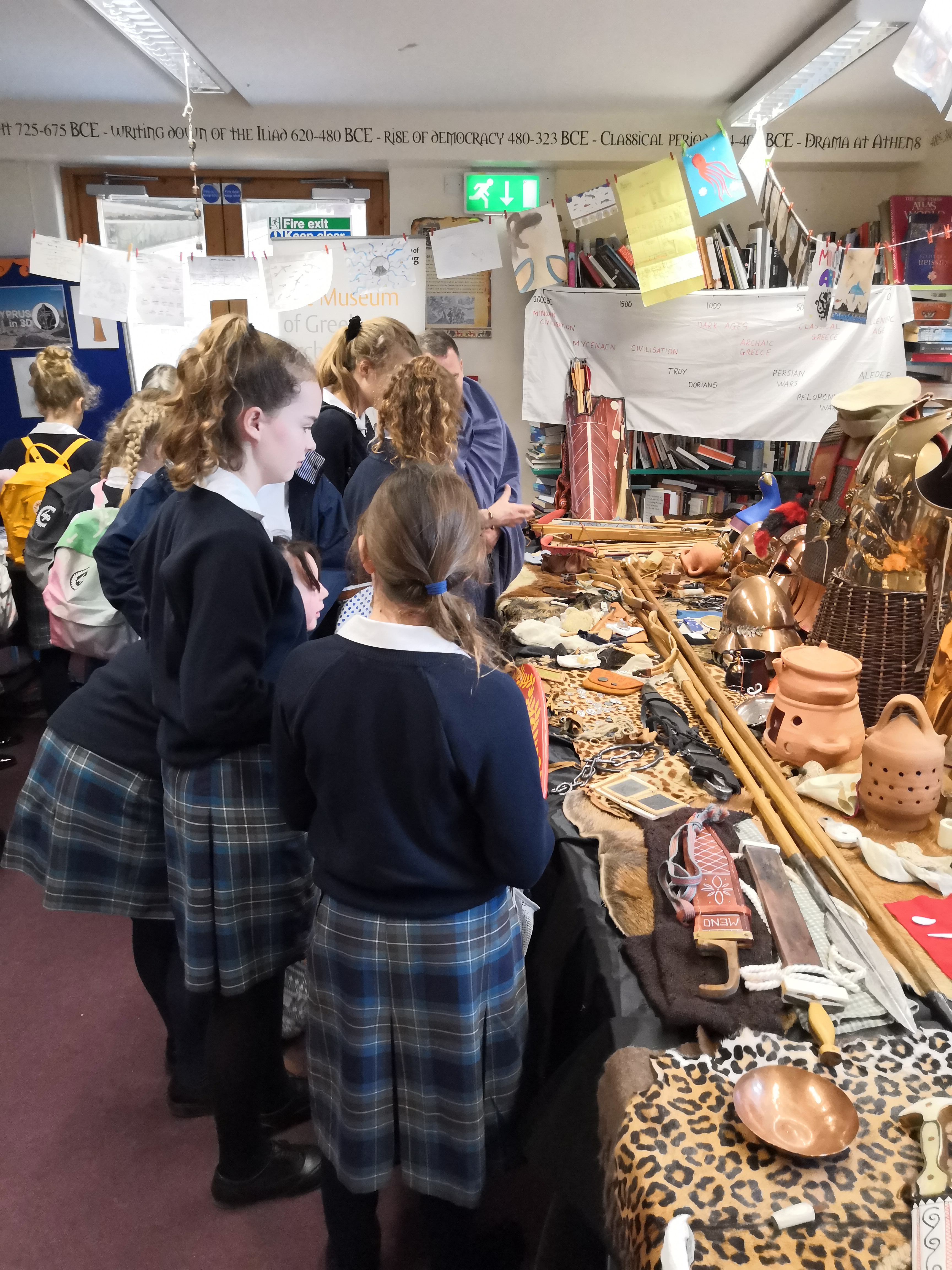
On Wednesday 27th March, we held our long-awaited Iris Festival of Natural History, Classics, Art & More at Cheney. For a few hours, Cheney School’s site was entirely transformed with the arrival of animatronic dinosaurs, tarantulas, ball pits, sundials, birds of prey, a storytelling tent, and many other unexpected and thrilling exhibits.
The Festival was a celebration of the Rumble Museum at Cheney, the first museum in a state school, and its journey towards Arts Council Accreditation, and over fifty different organisations travelled from near and far to run a very wide range of exciting stalls, activities, exhibitions and shows. The event was split into five main discovery zones. In the Science and Natural History zone, Cheney students and visitors explored spiders webs, fossils, botany and dragonflies, brought by the Cole Museum, Brookes Botanical Society, Natural History Museum in Oxford, University of Oxford Department of Zoology, the British Dragonfly Society and the Dinosaur Society. The Travelling Natural History Museum brought a range of models, and also two huge animatronic dinosaurs, who thrilled visitors with a show every half an hour! Millets Falconry brought beautiful owls which attracted a constant crowd of admirers.

Year Ten Cheney students created some dinosaur-themed cocktails to sample as light refreshments, while Year Eight students ran biscuit icing tables inspired by the Rumble Museum’s brand new Weird Sea Creatures Gallery. Visitors could also explore our Dragonfly Trail which started in the Library with six miniature dragonflies decorated by local primary schools, and led into the main central outside space at Cheney where eight large and beautiful models, designed by Cheney students to reflect areas of learning, could be explored.
There were also floating magnets demonstrated by Siemens, an astrocyte cell ball pit and display by the University of Oxford Department of Neuroscience, the Museum of the History of Science, Virtual Reality kits exploring mice embryos with the Department of Genetics, and exploring sleep and vision with the Nuffield Department of Neuroscience. East Oxford Primary displayed some of their beautiful work on space, and we also welcomed Isis Neutron and Muon Source. The University of Oxford Department of Earth Science explored volcanoes and the Department of Oncology brought a range of display and activity.
In Zone two, ancient and more recent archaeology and history was explored. The classics centre was filled with a range of exciting artefacts, as Historical Interpretations, Sunjester, and the Ure Museum all brought stunning exhibits, including Roman medical items and Cypriot figurines, bronze age helmets, arrows and shields,. Panoply Vase Animation exhibited their wonderful vase animations and archaeology activities, the British Museum, Museum of Oxford, and Ashmolean all brought interesting items and displays. The Cabinet project created a  trail to follow using the exhibitors’ items, and Bristol Grammar School students ran a very popular Greek vases activity stall. The Communicate Project explored Roman medicine.
trail to follow using the exhibitors’ items, and Bristol Grammar School students ran a very popular Greek vases activity stall. The Communicate Project explored Roman medicine.
Local history was very well-represented by the Soldiers of Oxfordshire Museum, Chalgrove Local History Society, the Oxfordshire Family History Society, and East Oxford Primary School staff and students who presented a wonderful display of the history of their school.
Zone three was filled with anthropology. The Pitt Rivers brought a range of objects, the Department of African Studies brought an African drum and played wonderful music, King’s College London and the London School of Mosaics worked with visitors to create a stunning natural history themed mosaic, Royal Holloway ran an Iraqi felting activity, and the University of Oxford Department of Archaeology ran Eritrean writing and colouring activities. New College School ran a rubbish sorting activity stall. In this zone, we also ran our Rumble cafe, with a range of themed biscuits, cakes, and other refreshments.
Zone four was our art zone, which featured a range of artistic displays and activities. Visitors could design and make their own badges, create clay dragonflies, have their facepainted by a team of Cheney students, have portraits drawn by artists Clive Goddard and Soham De, and watch artist Merlin Porter live-painting a beautiful mural of dragonflies and fossils. They could also explore the primary dragonflies, visual art workshops with Lizzy Rowe, and beautiful exhibits by artist Uniz Chuey.
Finally, the Story Museum filled our fifth zone with their eye-catching Pumpkin Tent, where people stepped inside and found themselves transported to fantasy world!
Alongside all these many activities and stalls, we were delighted and privileged to welcome four excellent speakers. Professor Richard Fortey started proceedings with his talk on palaeontology. This was followed by Professor Helen King on ancient medicine and magic, Royal Academician Peter Randall-Page on sculpture, and finally BBC Chief Arts Correspondent Will Gompertz on the importance of museums for transforming how we look at objects in our everyday lives.
We are enormously grateful to the very many organisations, volunteers, Cheney students and staff, and hundreds of visitors who came to enjoy everything on offer as the late afternoon sunshine spilled over the school site!

